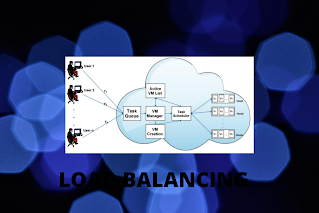Provisioning and Configuration Module:
It is the lowest level of the cloud and generally resides on bare hardware (such as firmware) or at the top of the hypervisor layer. Its function is to abstract the underlying hardware and provide a standard mechanism for generating virtual machine instances on demand. It also handles the post-configuration of operating systems and applications residing on the VM.
Monitoring and Optimization:
This layer handles the monitoring of all services, storage, networking and application components in the cloud. Based on the statistics, it could perform routine functions that optimize the behavior of the infrastructure components and provide relevant data to the cloud administrator to further optimize the configuration for maximum utilization and performance,
This layer handles the monitoring of all services, storage, networking and application components in the cloud. Based on the statistics, it could perform routine functions that optimize the behavior of the infrastructure components and provide relevant data to the cloud administrator to further optimize the configuration for maximum utilization and performance,
Metering and Chargeback:
This layer provides functions to measure the usage of resources in the cloud. The metering module collects all the utilization data per domain peruse. This module gives the cloud administrator enough data to measure the ongoing utilization of resources and to create invoices based on the usage on a periodic basis.
Orchestration:
Orchestration is central to cloud operations. Orchestration converts requests from the service management layer and the monitoring, chargeback modules to appropriate action items which are then submitted to the provisioning and configuration module for final closure. Orchestration updates the CMDB in the process.
Orchestration is central to cloud operations. Orchestration converts requests from the service management layer and the monitoring, chargeback modules to appropriate action items which are then submitted to the provisioning and configuration module for final closure. Orchestration updates the CMDB in the process.
Configuration Management Database (CMDB):
It is a central configuration repository wherein all the metadata and configuration of different modules, resources are kept and updated in a real-time basis. The repository can then be accessed using standards protocols like SOAP by third-party software and integration components. All updates in CMDB happen in real-time as requests get processed in the cloud.
It is a central configuration repository wherein all the metadata and configuration of different modules, resources are kept and updated in a real-time basis. The repository can then be accessed using standards protocols like SOAP by third-party software and integration components. All updates in CMDB happen in real-time as requests get processed in the cloud.
Cloud Life cycle Management Layer (CLM):
This layer handles the coordination of all other layers in the cloud. All requests internal and external are addressed to the CLM layer first. CLM may internally route requests and actions to other layers for further processing.
Service Catalog:
It is central to the definition of cloud, SC defines what kind of services the cloud is capable of providing and at what cost to the end-user. SC is the first thing that is drafted before a cloud is an architecture. The service management layer consults SC before it processes any request for a new resource.
It is central to the definition of cloud, SC defines what kind of services the cloud is capable of providing and at what cost to the end-user. SC is the first thing that is drafted before a cloud is an architecture. The service management layer consults SC before it processes any request for a new resource.





No comments:
Post a Comment
Please don't add any spam link in the comments.